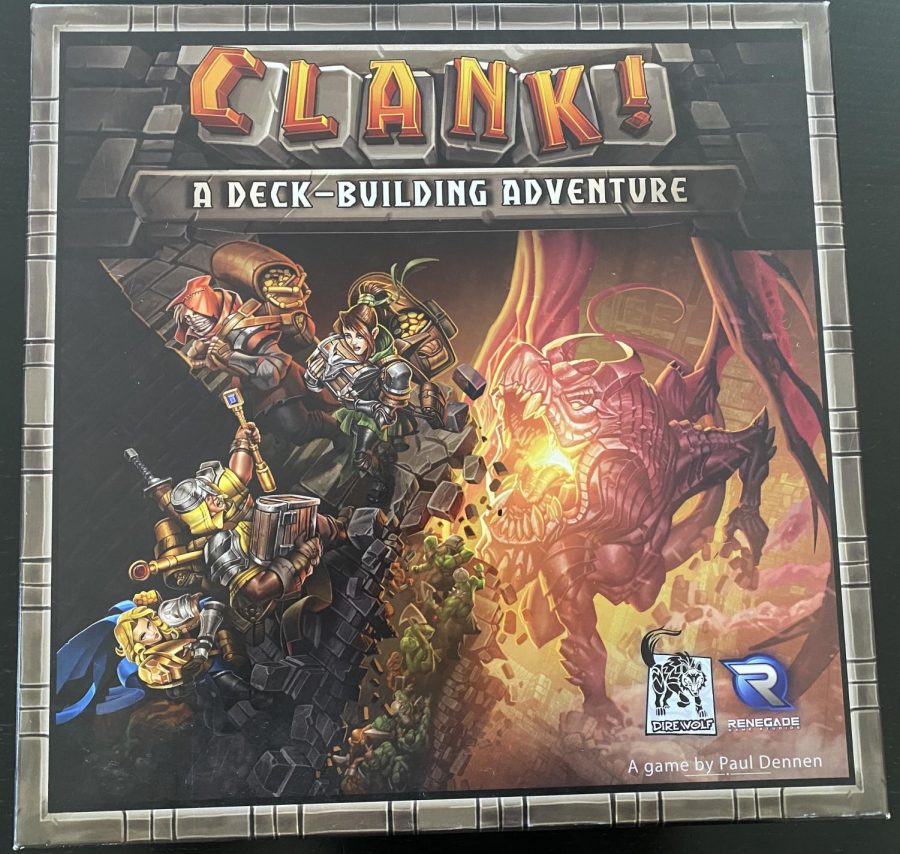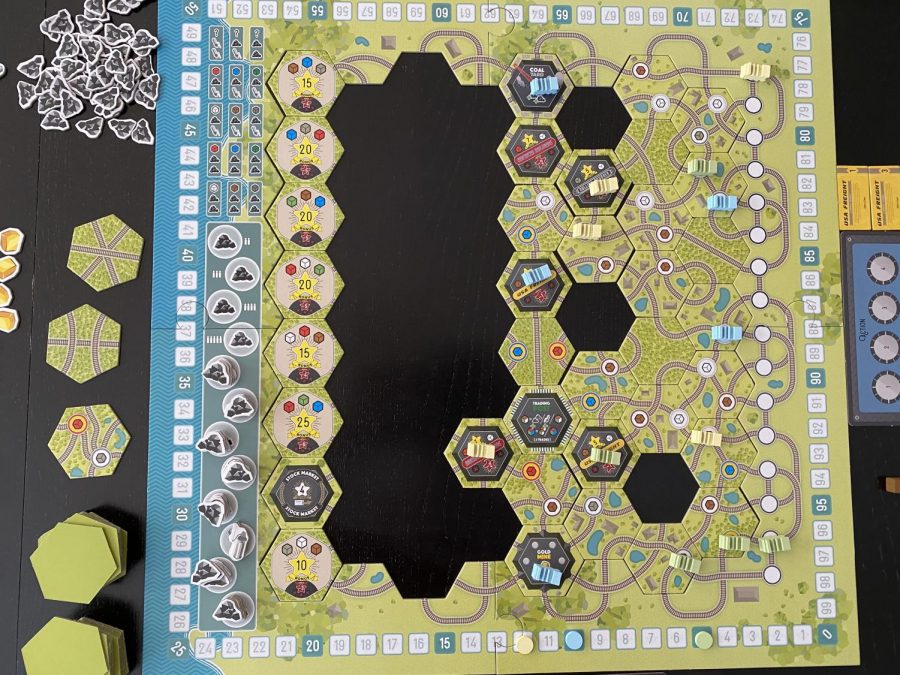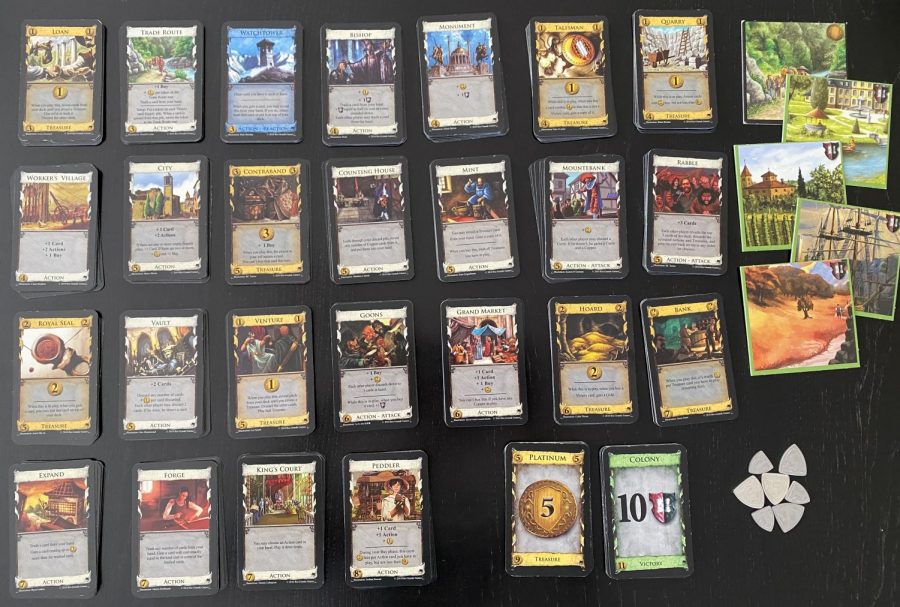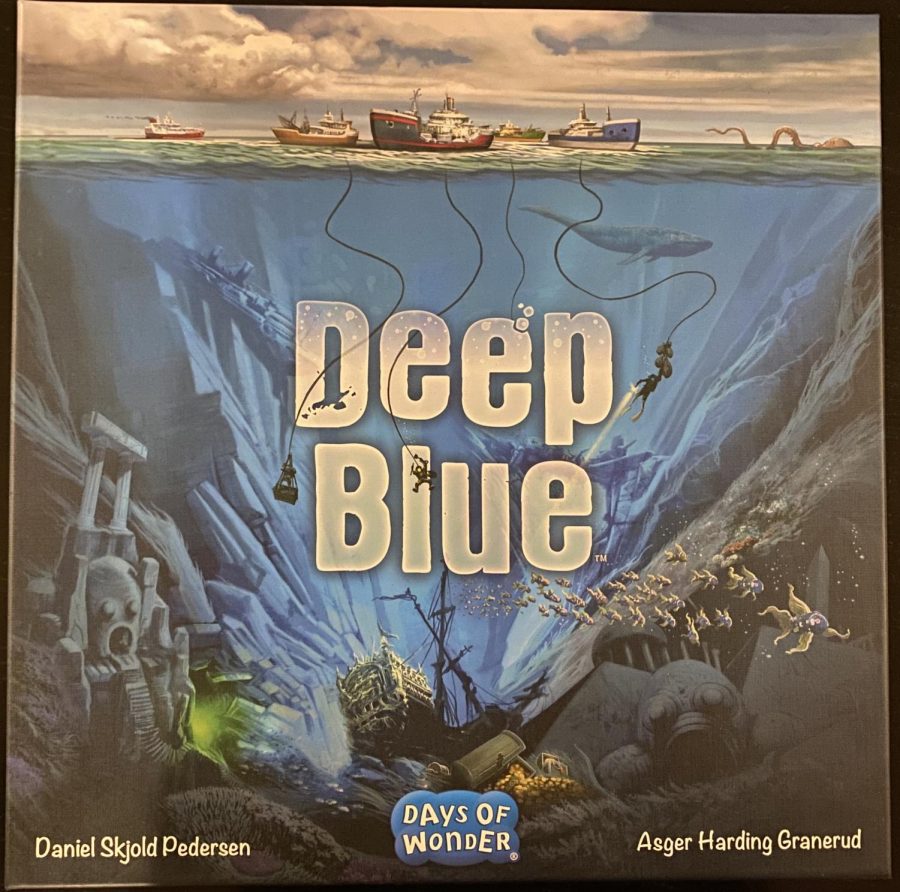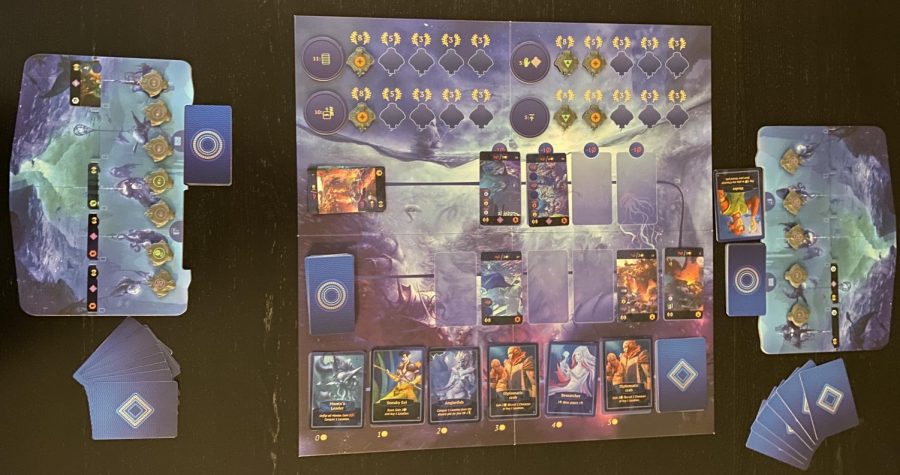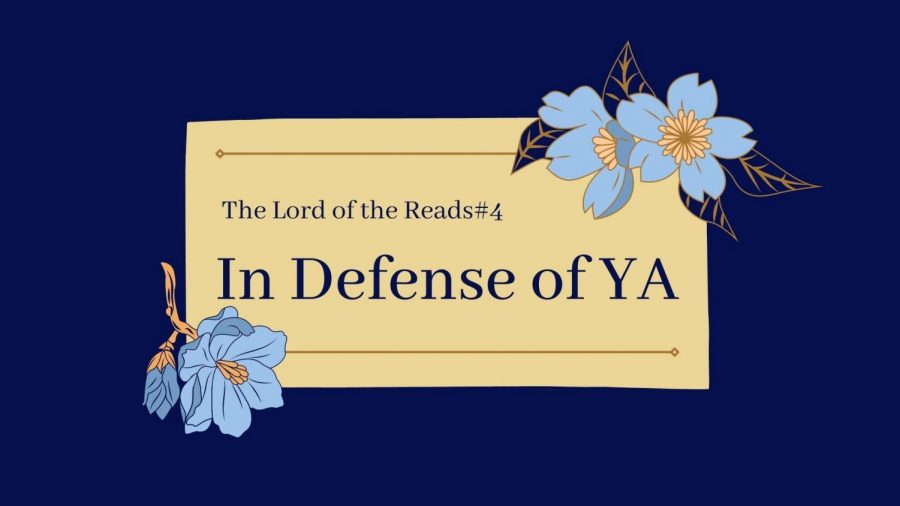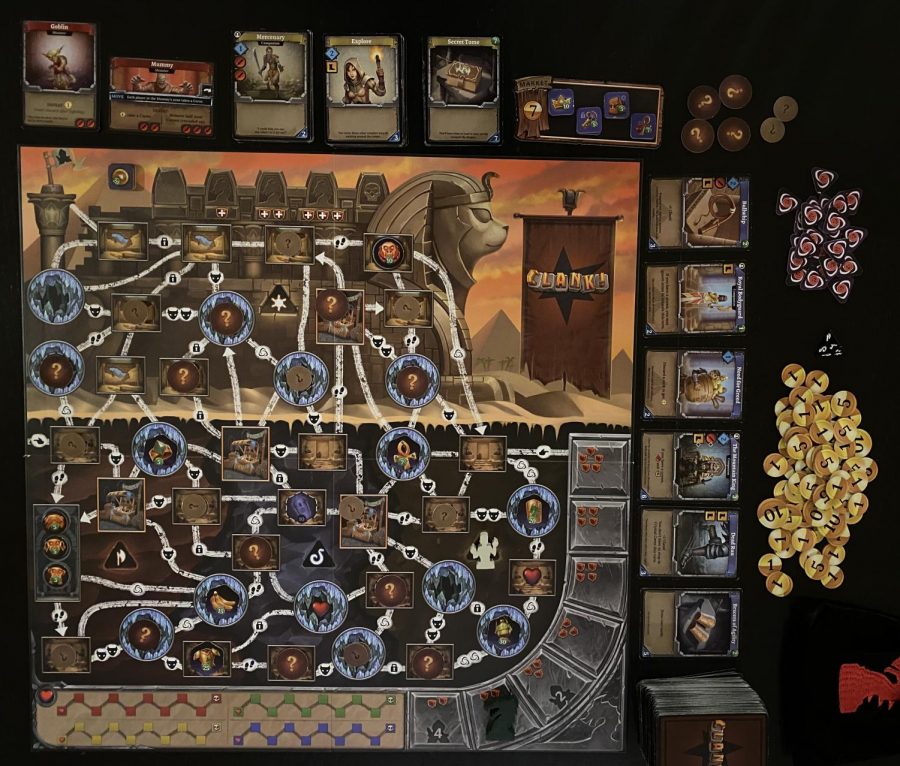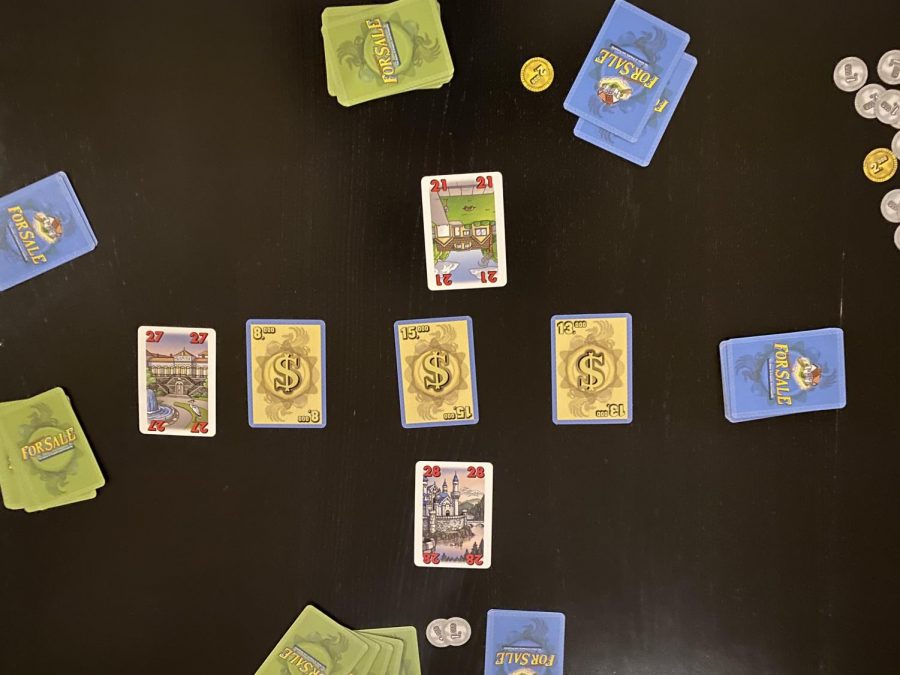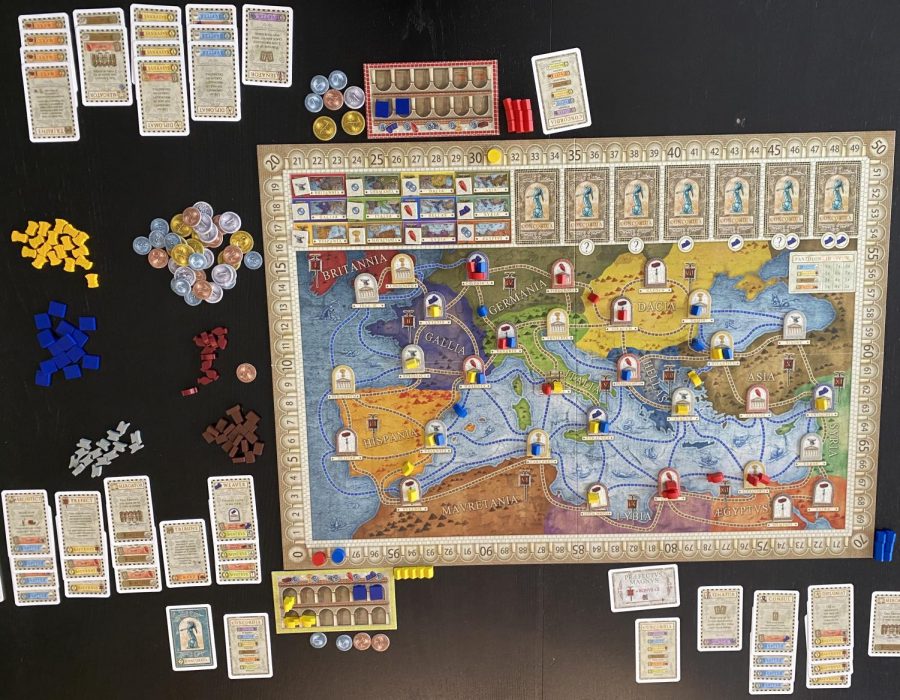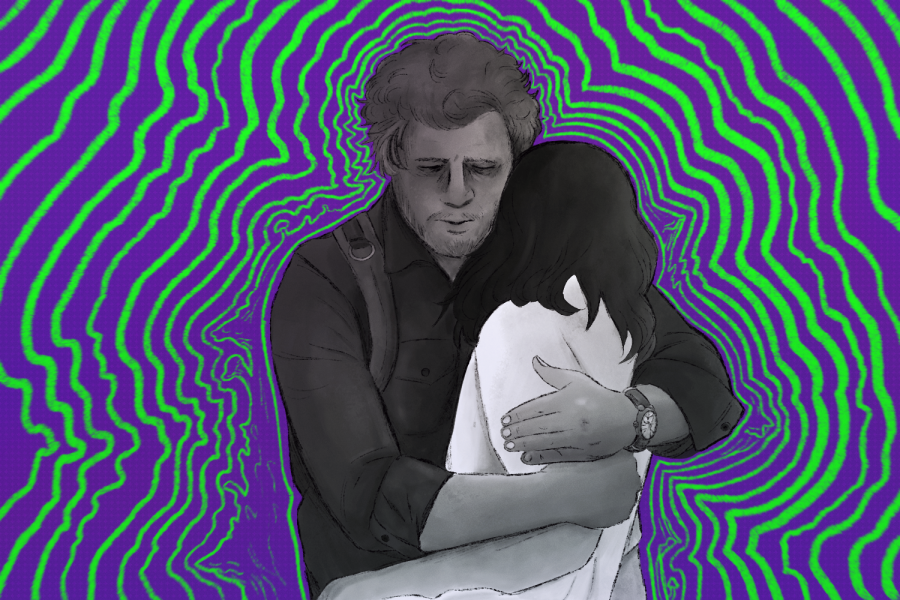As one of the greatest burglars of all time, your friends and you are sneaking into the dragon’s dungeon to steal artifacts and loot. But, you have to be careful because one wrong step can make noise and wake up the dragon!
The game titled, Clank! A Deck-Building Adventure, is designed by Paul Dennen and published by Renegade Game Studios. The goal of the game is to go into the dungeon, collect an artifact, and get back out. In order to do this, you are going to be creating a deck. Each turn, you will play all the cards in your hand and take actions, including acquiring new cards for your deck, in whatever order you want. At the end of your turn, you will discard all the cards you played and draw your next hand of five cards. When you have no cards left in your deck to draw a card, you’ll shuffle your discard pile to form a new deck.
You also have to escape the dungeon alive to get a score greater than zero. Two of your 10 starting cards and some other cards you can acquire will make clank whenever you play them. That means you’ll have to put one of your cubes in the clank area.
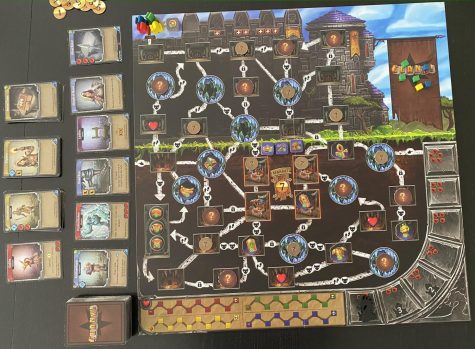
At the end of each turn, there may be dragon attacks. When those occur, all the cubes in the clank area are put in the dragon bag, and a number of cubes are pulled out. These cubes go on players’ life tracks. The goal is to escape the dungeon entirely or to have an artifact and be out of the dungeon’s depths when you run out of life, so you can still score points.
That game overview will make it easier to understand how to play, so let’s get to it!
How to Play
Your starting deck has six burgles, one sidestep, and one scramble, all of which are good cards that give you skill or movement. However, you also start with two stumbles, which are bad because they give you clank. As I mentioned, you’ll have five cards in your hand and you will have to play them all. As a sample turn, I play two burgles, a sidestep, a scramble, and a stumble. When I play the stumble, I have to place one of my clank cubes in the clank area because the card said “+1 clank” in the text area of the card. The rest of the cards gave me skill, the blue diamonds, and movement, the yellow boots, to spend on the rest of my turn.
Resources are shown in the upper left corner of the cards and can be gathered and spent during actions. The text on the cards take effect immediately when you play the card. In this example, I chose to play all my cards first, but you can play your cards and take actions whenever you want. Here are the actions you can take on your turn.
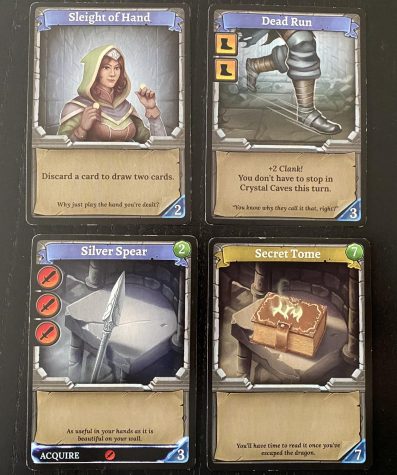
Acquire Cards
The cards in the game form the dungeon deck, and the dungeon row is made of six cards that you may be able to buy on your turn. The row will refill at the end of each turn.
You can use your skill to acquire any cards with a blue name banner. The price of each card is shown in the bottom right corner, and you can acquire any number of these cards as long as you have enough skill. Cards you acquire are placed in your discard pile. If the card has an acquire ability at the bottom of the card, it now takes effect.
There are also a few standard cards you can always buy instead of the cards in the dungeon row. Mercenaries give you swords, which you can use to defeat monsters and Explore gives you a decent amount of skill and movement. Secret Tomes take up space in your deck during the game, but can provide you with seven points at the end.
Use a Device
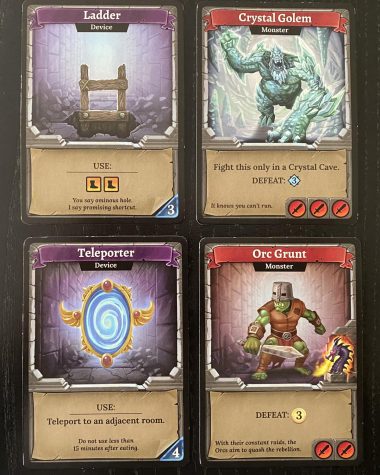
A few cards that have purple name banners are devices. You can pay the cost of the device to use its ability. Devices can only be used once, so they are discarded right after you buy them.
Defeat a Monster
Monsters in the dungeon row have red name banners. To defeat a monster, you need to spend the number of swords indicated in the bottom right corner of the card. When you do so, you’ll discard the monster and get the reward shown on the card. There is also a standard monster that can always be defeated, but its reward is lower than the monsters in the dungeon row. Since you don’t start with any swords in your deck, you’ll have to acquire cards that give you swords to be able to take this action.
Move
One of the biggest parts of the game is moving around the dungeon to collect an artifact and other loot. Each boot you have allows you to move one space across a marked path. There are different symbols that may appear on the paths that make it more difficult to travel through.
Footprints mean you need to spend two boots to move through that passage. Each monster icon on a path means you must spend a sword to move past it. For each sword you don’t spend, you take one damage and must place one of your cubes on your life track. You cannot move through tunnels with a lock on them and paths with an arrow are one-way only.
When you enter a room, you may find some treasure. Some rooms have secrets in them, and you may pick one of them up when you enter a room. Minor secrets are easier to obtain but provide a small benefit, such as two extra skill one turn, or an extra two swords for any future turn. Major secrets are found in rooms that are hard to get to, but provide more significant rewards including seven points or heal two damage on another turn.
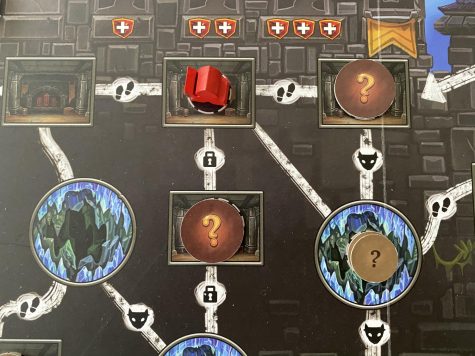
Some rooms have hearts or monkey idols. If you enter a room with a monkey idol, you can pick it up to get five points. Rooms with a heart let you heal a wound when you enter them, which you do by removing one of your clank cubes from your life track.
Some rooms are crystal caves. Once you enter a crystal cave, you are no longer able to use boots to move for the rest of your turn. You will be able to leave the cave on your next turn.
Pick up an Artifact
You need to collect an artifact to be able to score points. Artifacts are scattered around the dungeon, but the ones deeper in the dungeon are worth more points. As an action during your turn, you can pick up an artifact from the room you are in. However, you can only carry one artifact, so once you pick one up, you cannot trade it for a more valuable one later on. Therefore, it is sometimes wise to pass up an artifact early in the game to get a more valuable one later on.
Whenever you pick up an artifact, you also increase the dragon’s rage one step.
Buy a Market Item
You can obtain gold, the currency of the game, by defeating monsters and acquiring certain cards. Each gold you have is worth one point at the end of the game, but you can also spend gold to buy market items. All items cost seven gold and give you a special ability.
Buying a key allows you to move through passages with a lock icon on them. Having a backpack means you can collect an additional artifact as opposed to just one. Crowns give you 10, nine, or eight points depending on whether you were the first, second, or third person to buy one.
Those were all the actions you can take. When you are done playing your cards and taking these actions, you discard all the cards you played and draw five new cards. If your deck does not have enough cards, shuffle your discard pile to form a new deck.
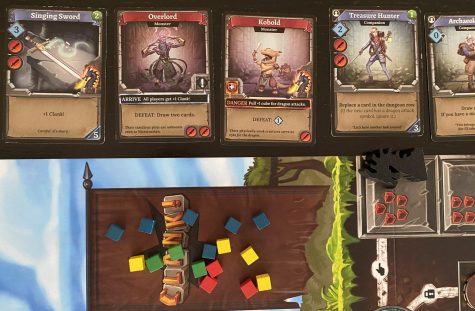
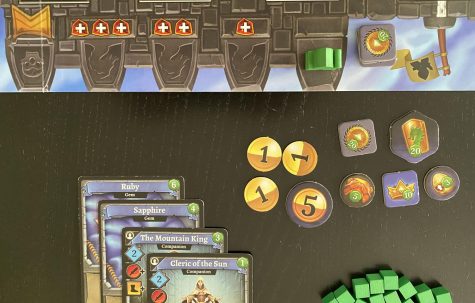
Next, you’ll have to refill the dungeon row, so it has six cards. If any of the new cards have “arrive text,” you must carry out its instructions. Then, if any of the new cards have a dragon attack symbol, there is one dragon attack. Put all the clank cubes from the clank area in the bag and pull cubes equal to the dragon’s rage plus any danger cards in the dungeon row. Any pulled cubes that match a player’s color are added to the next spaces on their life track.
A player stops taking normal turns when they have an artifact and leave the dungeon or when their life track is full. Anytime this first event occurs, that player receives a mastery token, worth 20 points. Anytime the second event occurs, check the location of the player. If the player has an artifact and is above the depths line, they can score the points they accumulated so far. Otherwise, they score zero points.
The first time either of these events occurs, that player moves their pawn to the countdown track. On their turns, they move forward one space on the countdown track and do a dragon attack. They pull extra cubes based on which space they are on. When they reach the last space of the track, everyone is the dungeon is knocked out. Anyone above the line with an artifact can still score points.
Scoring consists of your artifact, other tokens, gold, and points from your cards. The player with the most points wins with ties going to the player with the highest value artifact.
Final Thoughts
You may not understand everything you need to know to play the game, but I hope you got a decent understanding of the mechanisms involved. I like how there is deck-building that’s not just about your deck. You acquire cards because you have the skill to do so, and you want more cards to lower the frequency of clank generating cards. Many of the resources and abilities let you do something related to the dungeon row or the board instead of just your deck, which is different than most other games in that category.
Overall, the game feels fun every time. I can divide the game into a beginning, middle, and end phase. In the beginning phase, you are just starting to build your deck and determine your strategy. In the middle phase, you can collect loot and points and get closer to picking up your artifact. The last phase is a panic to get out of the depths, so you can score the points you’ve collected throughout the game. These phases come to each player at different times and last different amounts of time. My favorite of these phases is the middle because that is when you get to do a cool big move, where you pick-up a lot of tokens and play some interesting cards. Even if a game is not close or you aren’t able to escape the depths, the middle part of the game is always satisfying.
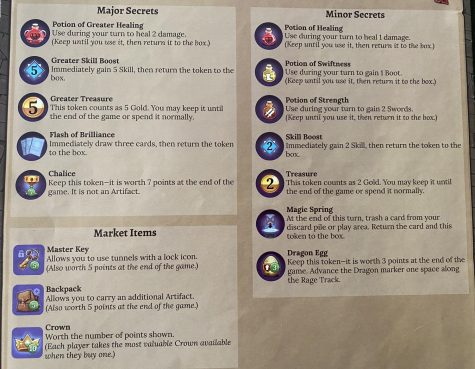
There are many strategies you can try to go for. You can try to collect a lot of boots, so you can move around the dungeon more and collect lots of loot. You also can try to get lots of gold and swords to defeat monsters and buy market items. Another interesting strategy is to go for skill to get many powerful cards and secret tomes for your deck.
The cards you acquire don’t have too many synergies. There aren’t a lot of powerful combinations, which is good because it stops you from making a deck that is too efficient. Part of the reason why that happens is that there are few opportunities to trash cards, which remove them from your deck for the rest of the game. There are also some powerful cards in the deck you can acquire, but they make clank each time you play them. They can help you score a lot of points, but also can make you lose the game.
The push your luck aspect at the end of the game is fun and suspenseful until you realize you got no points at all. It’s not fun to feel like an hour game resulted in no reward, and you can’t really blame the game or anyone else for that happening. The first time you encounter that fate is the worst, but it becomes less of a big deal in future plays. And you probably will play a safer game the time after scoring zero points, so it rarely happens to the same person multiple times in a row, which is a good morale booster.
There are also a few disappointing strategies. One player can try to quickly rush the game by grabbing the lowest value artifact and heading out. That gives everyone else only a few turns to get an artifact and head above the line. Despite the 20 point bonus, that strategy is difficult to pull off, but people try it anyway.
One weird scenario that didn’t happen until after a few dozen games was that a player could make it impossible for them to die. It happened multiple times where a player did not have enough cubes in the bag to die and another player was on the countdown track and emptied the entire bag. The rules do not have clarification for this rare scenario, but it seemed wrong that a player could essentially beat the game and play a few extra turns if they managed to make very little clank. It also seemed strange that the scenario was not addressed because it probably also came up in playtesting.
The last points I’ll talk about are the player counts, replayability, and game length. One hour is probably the average game length, but it doesn’t feel like a long time because you are planning your next turn and there are many options to consider. The game board is also double-sided and there are 100 cards in the dungeon deck. That provides a good amount of replayability, but the same boards can feel repetitive. However, Clank has a few expansions, which add new boards, each with its own special rules, and allows you to play on different boards every time you pull out the game. Some artifacts are randomly removed when playing with fewer players, but there is still a lot more loot per player with fewer people. It’s not a problem, but more people make the game more fun because there is usually a closer match and getting zero points is less irritating.
Overall, I really enjoy Clank and recommend it for people who like to play board games and don’t mind having a letdown near the game end. I only briefly talked about the different strategies and cards, but the available mechanisms are something that I really like.
Clank’s suggested price is $60, but it isn’t hard to find copies of it for as low as $45. It is worth the price, but the possibility of getting zero points is a minor hiccup for some people and forces me to give this game an 8 out of 10.

